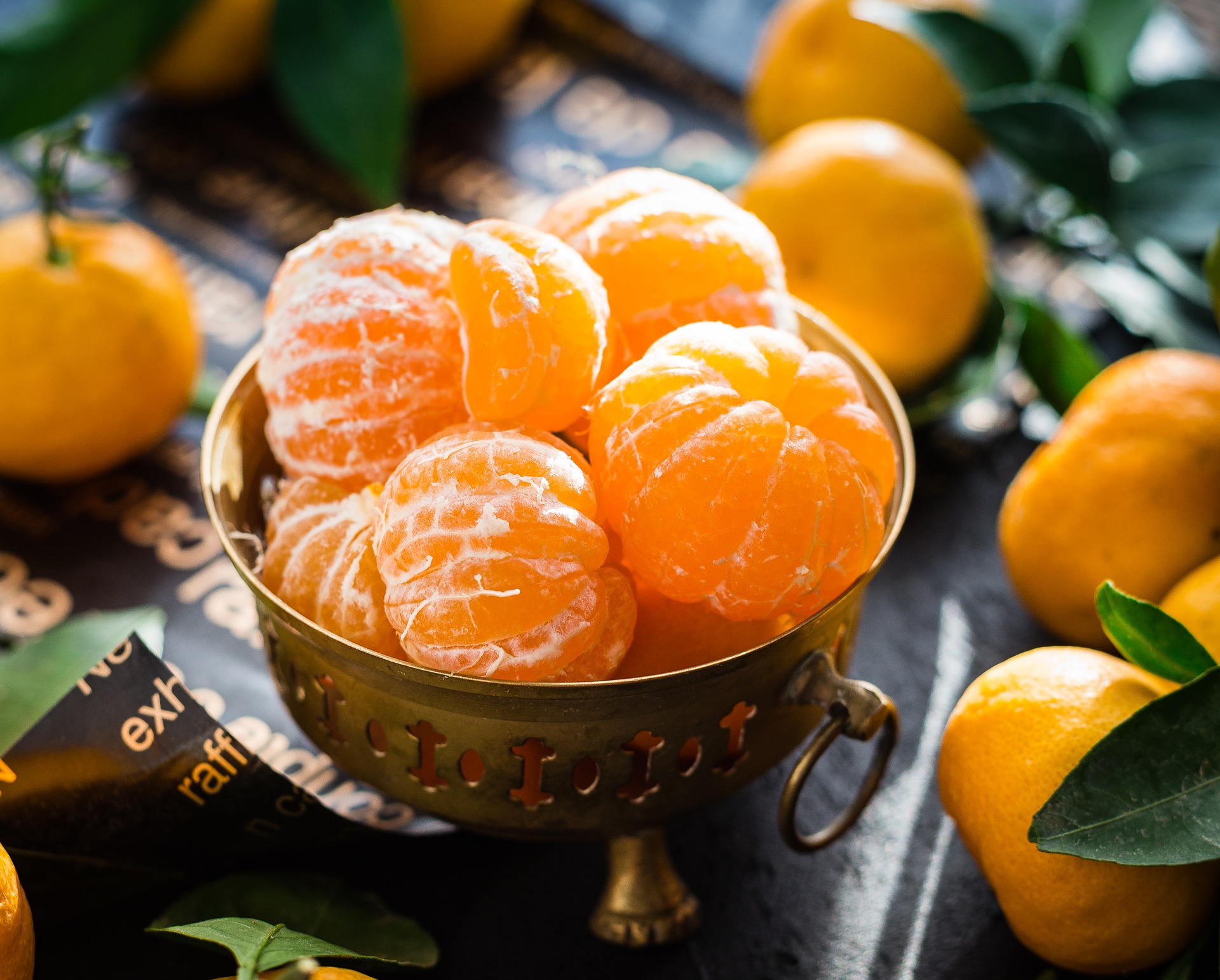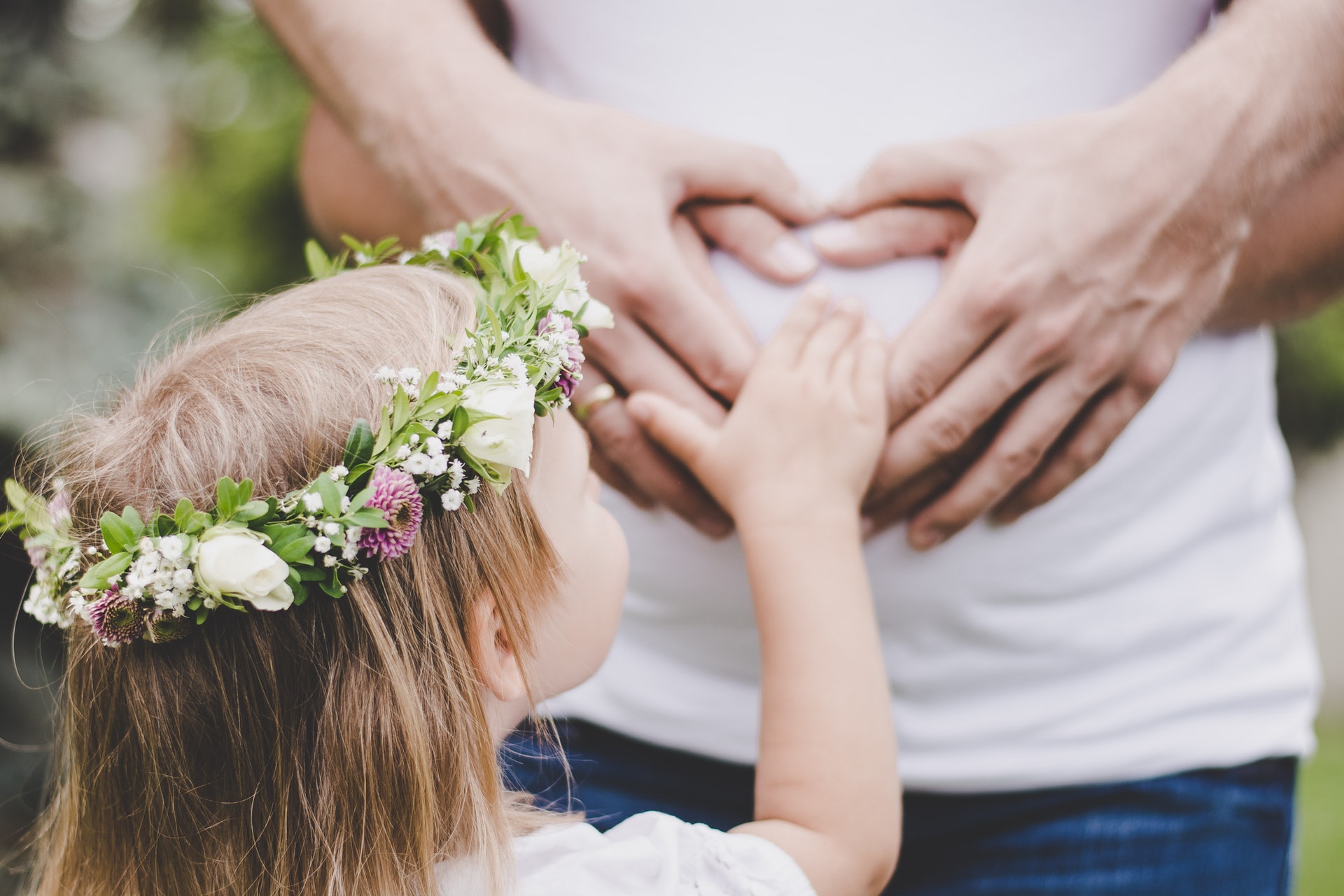Are you one of the ten million US adults living with an iron deficiency? How would you know? Why is iron deficiency a problem? And what can you do about it? Read on to learn all you need to know about iron deficiency.
Pale skin, hair loss, brittle nails, and shortness of breath while doing simple chores can be a sign of iron deficiency. It is the most common nutritional deficiency worldwide and commonly affects infants, children, pregnant and lactating women.
Iron deficiency affects one-third of the world’s population and is responsible for 50 percent of 1.62 billion anemia cases in the world; anemia being a lack of healthy red blood cells to carry oxygen to other cells in the body. In the United States, an estimated 10 million people have iron deficiency, of which 50 percent have anemia resulting from inadequate iron.
Role of iron in the body
From cell growth to enzymatic reactions in the body, iron is an essential component for body function. The most important and widely known function of iron is the role it plays in hemoglobin formation. Hemoglobin is the oxygen-carrying protein in red blood cells and is responsible for oxygen delivery to all cells in the body. It provides fuel to the cells so they can perform their functions. Iron deficiency has serious health impacts, including lethargy.
Iron deficiency: signs & symptoms
The health symptoms arising as a result of iron deficiency are mainly due to inadequate oxygen delivery to the body cells. Mid to moderate iron deficiency may not result in serious signs and symptoms, but lack of energy, unexplained fatigue, and generalized weakness is almost always there. Symptoms arising due to severe iron deficiency may include:
- Pale skin
- Shortness of breath, even on mild physical activity
- Rapid heartbeat upon climbing stairs and while doing daily chores
- Picophagia, i.e., ice or clay craving
- Hair loss
- Brittle nails
- Cold hands
- Sore or smooth tongue
- Lightheadedness
- Poor concentration
Iron deficiency also causes poor physical growth in infants and children, compromised immune status, and poor cognitive performance. A deficiency during pregnancy can increase the risk of infant mortality.
Studies have also shown that individuals with iron deficiency are likely to stay in the hospital longer than those without iron deficiency. They also have a poor cognitive function, reduced life expectancy, and increased risk of falls in the elderly.(6 7) Most of these functional changes occur when anemia develops.
Causes of iron deficiency
Iron deficiency can result from any one of the following three factors:
- Poor nutritional supply
- Excessive blood loss
- Increased iron demand
Various factors contribute to iron deficiency, the most important ones are as follows:
- Iron-poor diet
- Body changes during puberty, pregnancy, and lactation
- Malabsorption of iron due to some gastrointestinal problems, such as Crohn’s disease and celiac disease
- Medications that decrease the production of stomach acid, such as cimetidine, famotidine nizatidine, and ranitidine
- Blood loss due to heavy periods, surgery, accident, or due to any other cause
Factors that affect iron absorption from the intestines
Nature has spread iron in a variety of foods. Consuming iron-rich foods may not be enough; many other factors play a role when it comes to utilizing that iron in our bodies.
We have already mentioned that iron malabsorption occurs in some diseases. This section will discuss the dietary factors that enhance or inhibit iron absorption.
Factors that enhance iron absorption
Chicken, beef, fish, and some proteins increase iron absorption. Reddy et al. in their research study demonstrated that when a vegetarian diet was added with 60 g pork meat, iron absorption increased by 50 percent.
Ascorbate, citrate, vitamin C (ascorbic acid) also increases the absorption of iron. In fact, ascorbic acid is the only iron-absorption-enhancer in a vegan or a vegetarian diet. It also overcomes the effects of inhibitors of iron absorption, such as calcium. However, unfortunately, cooking, processing, and storage of food degrade ascorbic acid, and hence its ability as an iron enhancer. It is for these reasons that iron supplements are often combined with vitamin C, so that more iron may be absorbed.
Many fruits, such as oranges, kiwi, guava, grapefruit, lemon, and vegetables such as Brussel sprouts, capsicums, broccoli, and cauliflower, are excellent sources of ascorbic acid and should be added to diet to attain maximum iron absorption.

Factors that inhibit iron absorption
Phytic acid (a natural component of all plant foods), polyphenols (another plant-based compound), calcium, milk proteins, egg proteins, and proteins from soybean inhibit iron absorption. While all these foods offer numerous health benefits, their inhibiting effects on iron absorption can be countered with the addition of ascorbic acid (vitamin C) to your diet. Moreover, for better iron absorption, avoid taking calcium-rich foods and tea/coffee near mealtimes.
Groups at high-risk of, and from, iron deficiency
In this section we will discuss who is most at-risk of being iron deficient, and who is most at-risk of suffering adverse impacts from iron deficiency.
Iron deficiency affects individuals from all age groups, but some people have a high risk. The following groups are more likely to be affected by iron deficiency.
- Pregnancy and lactating women
- Young girls and women who experience heavy periods
- Vegans and vegetarians
- People undergoing major surgery
- Individuals with gastrointestinal health conditions, such as Crohn’s disease, celiac disease, and ulcerative colitis, and stomach ulcer.
Iron deficiency during pregnancy
Pregnancy increases the demand for iron. The recommended daily iron intake during pregnancy is 27 mg as opposed to 15-18 mg required for a non-pregnant adult woman. It is not uncommon that during pregnancy, iron stores become depleted and the likelihood of iron deficiency and anemia increase, which could lead to poor pregnancy outcomes, such as preterm delivery and low birth weight.

Women with iron deficiency anemia frequently experience rapid heartbeats, tiredness, breathing issues, and sleeping difficulty. They also have an increased risk of bleeding and infections. Moreover, iron deficiency has an adverse impact on fetal growth. Prolonged iron deficiency during pregnancy can cause premature birth, low weight babies, poor mental development, growth retardation, and high risk of mortality especially in cases of iron deficiency during the first three months of pregnancy.
Children born to mothers with iron deficiency have lower iron stores and have a high risk of developmental difficulties, including delayed speech and motor functions, and delayed social, emotional, and adaptive functions. Although breast milk provides adequate iron to the newborn if the mother has sufficient iron, in other cases, treatment with iron supplements may be necessary for infants who are at high risk of iron deficiency.
Iron deficiency during pregnancy will result in newborns with iron deficiency at birth. Studies show that infants with iron deficiency are easily tired and are more wary and hesitant as compared to healthy infants. Depending on the timing and severity of the iron deficiency, its adverse effects on the child may or may not be reversible. It is therefore essential for pregnant women to stay on top of their iron intake.
Vegans and vegetarians are especially at-risk. While science has found enormous benefits to plant-based diets, these diets are lacking certain nutrients, which makes it necessary to take supplements. For example, iron in plant-based foods is not as easily absorbed as the iron found in animal-based foods.
Here are some suggestions for vegan and vegetarian women to improve their iron absorption:
- Increase vitamin C-rich foods, such as strawberries, oranges, melon, kiwi, tomatoes, and bell peppers, in your diet. This will help increase iron absorption.
- Do not take tea, coffee, and other iron-inhibiting foods near mealtimes.
- If you use antacids, do not take them within 2-4 hours of taking iron supplements.
- If you feel any signs and symptoms of iron deficiency, consult your healthcare provider. They commonly prescribe iron supplements to women who are anemic and are either pregnant or trying to conceive.
Iron recommended intake
The Food and Nutrition Board (FNB) at the Institute of Medicine (IOM) of the National Academies has recommended the following dietary allowances for iron in various age groups:
- Birth to 6 months: 0.27 mg
- 7-12 months: 11 mg
- 1-3 years: 7 mg
- 4-8 years: 10 mg
- 9-13 years: 8 mg
- 14-18 years:
- Males: 11 mg
- Females: 15 mg
- Pregnancy: 27 mg
- Breastfeeding: 10 mg
- 19-50 years:
- Males: 8 mg
- Females: 18 mg
- Pregnancy: 27 mg
- Breastfeeding: 9 mg
- >50 years: 8 mg
Dietary sources of iron
Here’s a list of foods which are rich in iron:
- Meat: Beef, liver
- Poultry and seafood: Chicken, turkey, shellfish, oysters, sardines, tofu.
- Legumes: lentils, kidney beans, lima beans, white beans, chickpeas
- Fruits and vegetables: Banana, mulberries, olives, spinach, broccoli, kale, mushrooms, palm hearts,
- Nuts and seeds: peanuts, walnuts, pistachios, pecans, roasted almonds, roasted cashews, pumpkin seeds, sunflower seeds, sesame seeds, hemp, flaxseeds.
Who should take supplements?
Iron supplements have played an important role in dealing with the global issue of iron deficiency. These supplements are especially beneficial to the high-risk groups. Although individuals with adequate iron stores don’t need to take supplements, women who are planning to get pregnant, but may not receive the recommended amount of iron through diet should start taking iron supplements before pregnancy. Vegans, vegetarians, and young girls with heavy periods should also consider taking iron supplements.
What are the risks of iron overdose?
Taking high doses of iron (>20 mg) can cause side effects like stomach pain, vomiting, and constipation. Very high doses can be fatal, especially in children. This usually occurs if a child accidentally ingests adult dose iron supplements. Keep all medicines away from the reach of children.
A quick note on pill organizers
The most important reason to have a pill organizer is to maintain a medication and supplements routine during those times in life when your routine is broken. But another major factor is safety.
A pill organizer improves the safety of keeping medication in a number of ways:
- By allocating the precise number of doses needed for a given duration of time, it will be obvious when a pill is missing; that will help you avoid double dosing and it will make it obvious when a pill has dropped out of the container and potentially been ingested by a child or pet.
- A pill organizer with a strong clasp provides a consistent mechanism for securing contents, which is potentially more secure than some medication packaging. This makes it less easy for small children to access your medication.
- Many pill organizer have highly protective enclosures, taking better care of your pills through rough handling and even moisture or heat.
Iron overdose cases in adults are a rare occurrence and are often seen along with multi-drug overdose.
Hemochromatosis: When the body stores too much iron
The human body can absorb up to 35 percent of the ingested iron. However, in certain disorders, the body absorbs much more than it needs. The extra iron gets stored in joints and various organs, especially the liver and the heart. Since organs cannot tolerate iron overload, they are likely to damage and may even stop working. A high concentration of iron is also associated with diseases, like diabetes, heart diseases, and some cancers. Hemochromatosis is mostly due to genetic causes, but may also be a result of chronic alcoholism and anemia.
Conclusion: ironing out the details
Adequate nutrition may not fulfill the iron demands of the body, especially in the case of iron-poor diet. Watch out for iron absorption inhibitors, such as milk and coffee. Avoid taking them near mealtimes. Vegans and vegetarians should include a variety of fruits, vegetables, nuts, and seeds to their diet; this will help reduce the risk of iron deficiency. Pregnant women should consult their healthcare provider for recommendations on iron, folic acid, and omega-3 supplements.

References
We prefer to source information from high-quality, academically rigorous sources. These are the references we used to develop this article:
- World Health Organization, Centers for Disease Control and Prevention Atlanta. Worldwide prevalence of anaemia 1993–2005. WHO Global Database on Anaemia
- Miller, Jeffery L. Iron deficiency anemia: a common and curable disease. Cold Spring Harbor perspectives in medicine vol. 3,7 a011866. 1 Jul. 2013, doi:10.1101/cshperspect.a011866
- Schneider AL, Jonassaint C, Sharrett AR, Mosley TH, Astor BC, Selvin E, Coresh J, Gottesman RF. Hemoglobin, Anemia, and Cognitive Function: The Atherosclerosis Risk in Communities Study.. J Gerontol A Biol Sci Med Sci. 2016 Jun;71(6):772-9. doi: 10.1093/gerona/glv158. Epub 2015 Sep 11.
- World Health Organization. Iron Deficiency AnaemiaAssessment, Prevention, and Control: A guide for programme managers. WHO/NHD/01.3, 2001
- Shander A, Goodnough LT, Javidroozi M, Auerbach M, Carson J, Ershler WB, Ghiglione M, Glaspy J, Lew I. Iron deficiency anemia–bridging the knowledge and practice gap. Transfus Med Rev. 2014 Jul;28(3):156-66. doi: 10.1016/j.tmrv.2014.05.001. Epub 2014 May 15.
- Satish Keshav and Richard Stevens. New concepts in iron deficiency anaemia. British Journal of General Practice 2017; 67 (654): 10-11. DOI: https://doi.org/10.3399/bjgp17X688465
- Penninx BW, Pluijm SM, Lips P, Woodman R, Miedema K, Guralnik JM, Deeg DJ. Late-life anemia is associated with increased risk of recurrent falls. J Am Geriatr Soc. 2005 Dec;53(12):2106-11.
- Nazanin Abbaspour, Richard Hurrell, and Roya Kelishadi. Review on iron and its importance for human health. J Res Med Sci. 2014 Feb; 19(2): 164–174.
- Teucher B1, Olivares M, Cori H. Enhancers of iron absorption: ascorbic acid and other organic acids. Int J Vitam Nutr Res. 2004 Nov;74(6):403-19.
- Allen LH. Anemia and iron deficiency: effects on pregnancy outcome. Am J Clin Nutr. 2000 May;71(5 Suppl):1280S-4S. doi: 10.1093/ajcn/71.5.1280s.
- Milman N. Postpartum anemia II: prevention and treatment. Ann Hematol. 2012 Feb;91(2):143-54. doi: 10.1007/s00277-011-1381-2. Epub 2011 Dec 9.
- Murray-Kolb LE. Iron and brain functions. Curr Opin Clin Nutr Metab Care. 2013 Nov;16(6):703-7. doi: 10.1097/MCO.0b013e3283653ef8.
- Julie M Schneider, Mary L Fujii, Catherine L Lamp, Bo Lönnerdal, Kathryn G Dewey, Sheri Zidenberg-Cherr. Anemia, iron deficiency, and iron deficiency anemia in 12–36-mo-old children from low-income families. The American Journal of Clinical Nutrition, Volume 82, Issue 6, December 2005, Pages 1269–1275
- Noran M. Abu-Ouf and Mohammed M. Jan. The impact of maternal iron deficiency and iron deficiency anemia on child’s health. Saudi Med J. 2015; 36(2): 146–149.
- Lozoff B, Klein NK, Nelson EC, McClish DK, Manuel M, Chacon ME. Behavior of infants with iron-deficiency anemia. Child Dev. 1998 Feb;69(1):24-36.
- Emily C. Radlowski and Rodney W. Johnson. Perinatal iron deficiency and neurocognitive development. Front. Hum. Neurosci., 23 September 2013
- Fraga CG1, Oteiza PI. Iron toxicity and antioxidant nutrients. Toxicology. 2002 Oct 30;180(1):23-32.